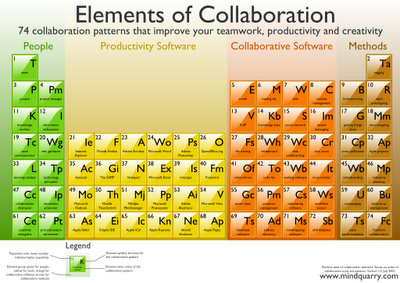Here’s the latest video from Saachi and Lee LeFever’s Commoncraft Plain English Series: Social Bookmarking in Plain English, taking del.icio.us as an example. Nice work, you’ll see that they have again refined their style and presentation.
Intellipedia’s origins
In IT Conversations there’s this interview (mp3) Jon Udell does with one of the promoters of web 2.0 in US intelligence agenicies: Lewis Shepherd.
As senior technical officer for the Defense Intelligence Agency and chief of its requirements and research group, Lewis Shepherd has promoted and observed a remarkable transformation that’s occurring inside the U.S. intelligence community as analysts begin to embrace Web 2.0 practices. There’s a long way to go. But already thousands of analysts are contributing to Intellipedia, an internal system based on the same software that powers Wikipedia. And a vibrant internal blogging culture has evolved too.
In this conversation, Jon Udell and Lewis Shepherd discuss the origins, progress, and future of these initiatives. They also discuss broader IT efforts within the Department of Defense: service-oriented architecture, consolidation and virtualization, and the relationship between informal Web 2.0 and formal “Web 3.0” approaches to the semantic Web.
Periodic Table of Collaboration
Mindquarry have devised a nice visualization, aka the “Periodic Table of Collaboration” differentiating four categories: People (Roles), Productivity Software, Collaborative Software and Methods.
The aim of “Elements of Collaboration” is to give an overview about current collaboration techniques and technology and to show how better collaboration can lead to improved workflows and higher productivity.
This aim is ambitious – while providing an overview is cool and I really like this approach it surely does not show how workflows can be improved or how productivity may benefit – besides, any concept that presents IE and Outlook under the hood of productivity software is seriously flawed in my mind …
Joking aside, there are a lot of clever ideas and concepts collected and refined, it may serve very well as starting point for (collaboration-oriented) discussion, more than e.g. the other enterprise 2.0 visualizations I’ve pointed out here, summing up then:
This framework provides a concise view of the nature of Web 2.0. While one can debate whether all important issues are collected, this visual approach lends itself to kicking off discussions (where one can elaborate further on). It provides a nice starting and reference point, and this is essential: When advising on the ideas and concepts of Enterprise 2.0 in the corporate world, I’m experiencing that it’s best to explain both instruments (methods and tools, i.e. the “how”) and goals and visions (paradigms and principles, the “why”) intertwined …
